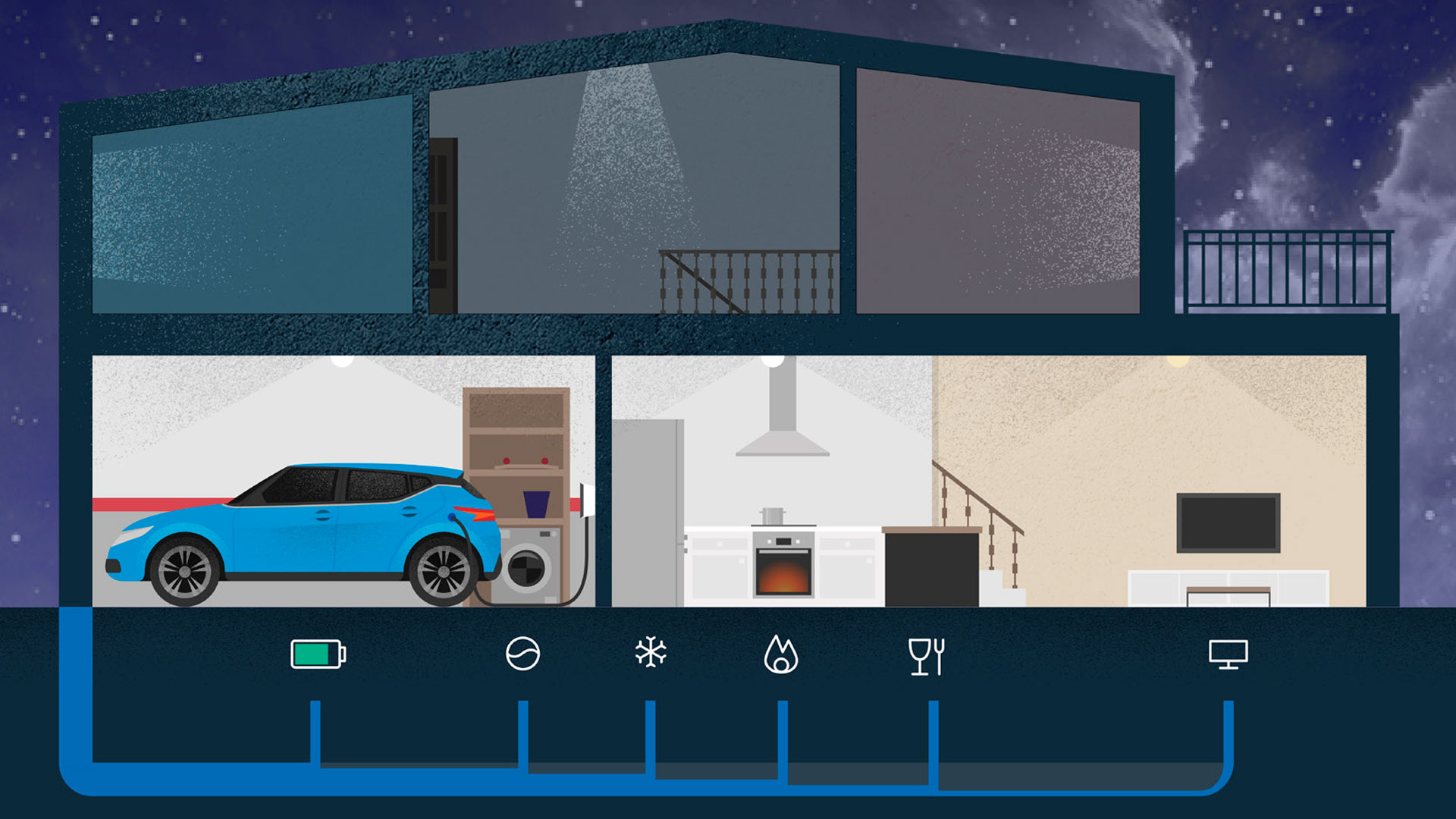
The eHome Link charger is the next generation of charging devices intended for all types of domestic charging situations, such as a private garage or community car park.
When purchasing an electric vehicle, it is important to know all the characteristics offered by the manufacturer to ensure that it meets your expectations in terms of performance and range. Another very important aspect that is sometimes overlooked is the type of charger the user needs to install to make sure the vehicle can be recharged when parked at home. To select it correctly, the user not only has to take into account the type of connector required, which must be the same as in the car, but they have to know what features the charger offers in order to adapt its features to their lifestyle.
The eHOME Link charger is especially designed to make it easy for users to recharge their electric vehicle, offering the peace of mind of being able to leave home with a fully charged battery, using a charging power of 7.3kW (single-phase charge) or 11 kW (three-phase charge). To offer this, we took into account all the potential problems that could arise in a domestic installation and added new features to address them.

The new eHOME Link chargers have the same features as the eHOME range, such as: LED charge status indicators, remote vehicle charging activation, adjustable maximum power, and compatibility with the CirBEON dynamic power manager. However, we have added new features to improve charge management, such as:
Currently, billing meters have an internal circuit breaker element that trips when demand exceeds the contracted power. The tripping of this breaker forces the user to disconnect all the electrical loads before the system can automatically rearm.
The most common way to do this is to reset the circuit using the main breaker in the home. If the charging point is connected after the home's main breaker, the system will rearm without any problem. However, there are installations where the line that supplies the electric vehicle comes directly from the meter, without going through the main breaker in the home. In this case, the system will not be able to rearm unless the user manually disconnects the vehicle from the charging point. This can cause problems, especially if the vehicle is parked in a community car park.
To get around this inconvenience, the eHOME Link range features a system in the charger's own protection panel that allows the meter to be automatically reconnected if the breaker trips due to overcurrent, to comply with Scheme 2 of ITC-BT-52, without having to manually reset the automatic switch.

In the event of a voltage spike, the device has a detector to disconnect it from the grid and avoid any type of damage. Once the spike clears, the device reconnects automatically, ensuring the charger and the electric vehicle are working correctly.
Guarantees continuity in the installation and protects the users of the electric vehicle in the event of a DC leak in excess of 6 mA. If there is a DC leak in the electric vehicle during the charging process, the built-in breaker will trip, avoiding unwanted trips of upstream breakers, thus ensuring the continuity of the installation. Even more importantly, it would prevent the upstream breakers from being blinded if the leakage is greater than 6 mA DC, protecting both the installation and users from electrical shock.
Allows integrating the charger with an external BEMS (Building Energy Management System) for smart administration, control and monitoring purposes. In buildings with multi-user car parks, each eHOME link can send information to any control software that works with the Modbus protocol in order to manage the power demanded by each charger, varying it based on the power available. This feature can be used to easily create a dynamic charging system without having to increase the contracted power of the installation.

In homes, electric vehicles are usually recharged at night, taking advantage of periods when consumption is lower and electricity is more affordable. During the charging process, it is important to take into account the consumption of the connected loads, as well as the power demanded by the electric vehicle, since if the consumption exceeds the contracted power, the relay integrated into the meter will disconnect the installation from the grid.
To avoid this problem, a CirBEON controller has to be installed. This solution features a measurement device that dynamically adjusts the electric vehicle's consumption to the power available in the installation. This way, if you connect several loads at night in addition to the electric vehicle, the system will reduce the vehicle's charging power so as not to exceed the contracted power of the installation. This avoids both the interruption of the supply and the need to increase the contracted power of the installation as a result of connecting an electric vehicle to it.

WRITTEN BY CIRCUTOR